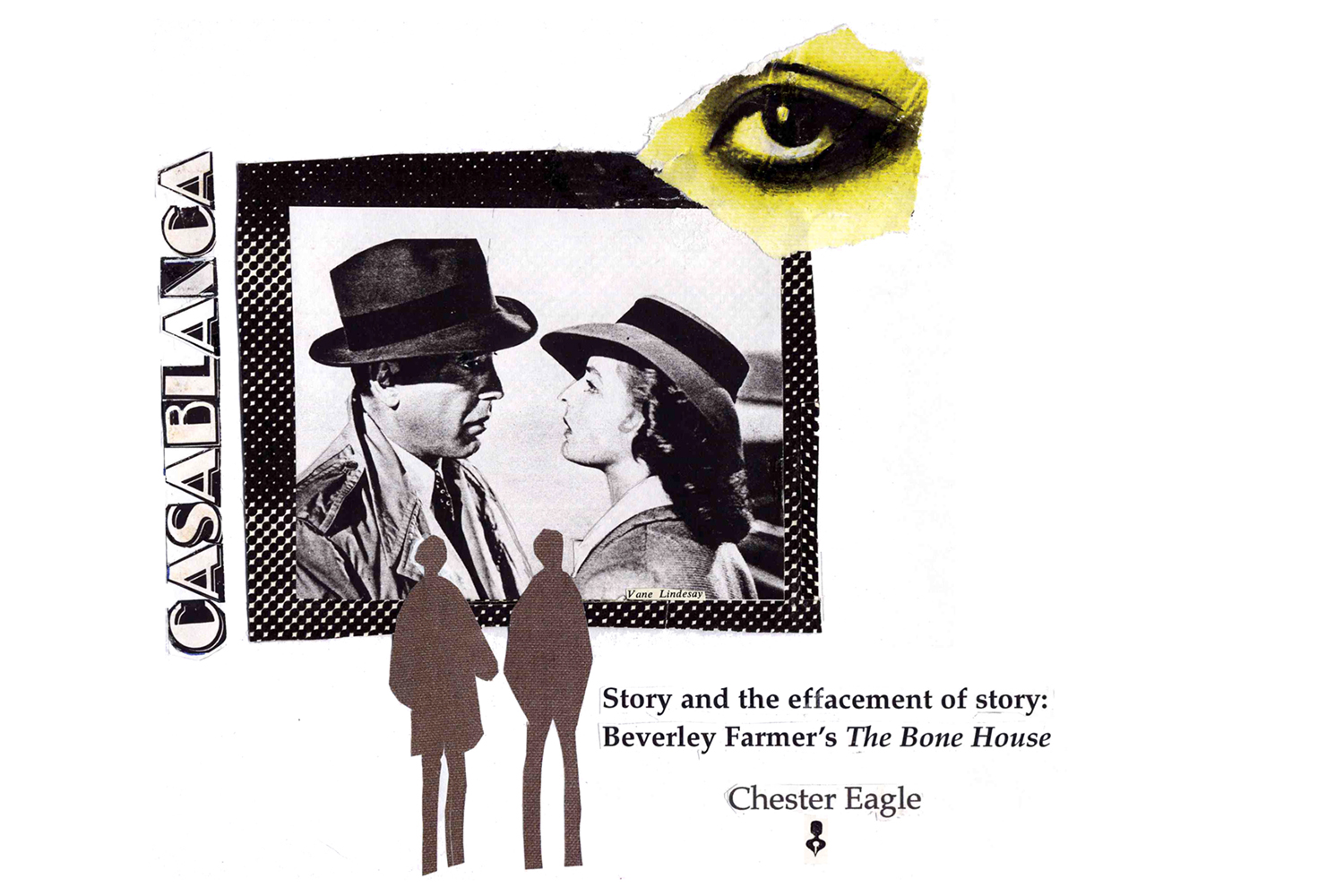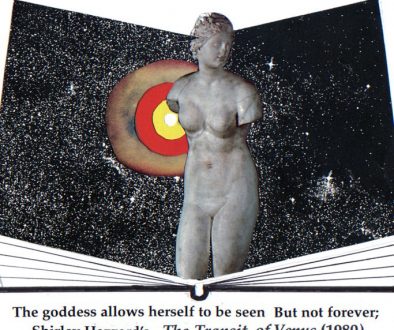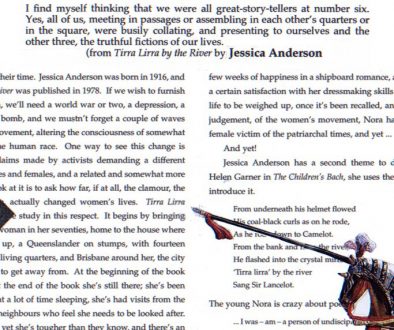16. Story and the effacement of story: Beverley Farmer’s The Bone House

16. Story and the effacement of story: Beverley Farmer’s The Bone House
Story and the effacement of story: Beverley Farmer’s The Bone House:
My essay’s about The Bone House, but I want to start in Beverley Farmer’s mid-career, then go back to a couple of earlier stories, then return to the contemplations she invites us to share with her in what is, as I write, her latest book.
A Body of Water (University of Queensland Press, 1990) combines two modes of writing. It contains five short stories, of the sort we know from Farmer’s earlier collections, Milk and Home Time, and it also gives us her writer’s notebook, kept over the period from February 1987 to February 1988, with stories occurring in the months of April, May, June, July and the second February. Her notes refer to books she’s reading, things she’s done, interaction with friends, and of course, thoughts. Here’s part of an entry that catches my eye. She’s talking about ‘Vase with Red Fishes’, the story for June, and it leads her to reflect on the trompe-l’oeil art of M.C.Escher:
To have (the two characters) behave like an M.C.Escher drawing, modulating from plane to plane, form to form, dovetailing … In his Reptiles, lizards rise off the page in the picture and crawl in single file over the items on the desk to re-enter the page; in Drawing Hands, two hands rise off opposite ends of a pinned sheet of paper, each holding a pen with which it is drawing the other’s cuff, having by implication just been drawing the other hand.
Escher, as many readers will know, is a master of this sort of thing; he manages to persuade us that water can flow around all four sides of a picture, down, sideways, up. [read more]
Introduction:
In 1981 Patrick White published an autobiographical book called Flaws in the Glass; the Melbourne Age commissioned two reviews, one of them from Hal Porter, who said, among many things unflattering to ‘Mr White’:
Writers of my sort can be said not so much to read as to examine another writer’s work rather as one car freak examines the vehicle and driving of another car freak. One says, “Splendid vehicle! Superb driving!” Or, “Nice vehicle! Ghastly driving!” Or, “Can’t stand that kind of cumbersomely pretentious vehicle! And what bewildering and erratic driving!”
Hal confesses that the third attitude is his to the novels and plays of ‘Mr White’. I will say no more at this point about Mr White or Mr Porter, but I quote this comparison of writer and car freak because in the essays that follow I am the freak who comments on others of his kind. I know I can’t see my essays as others will see them but I imagine some readers accusing me of many things, and others, well trained, perhaps, in one or another school of literary or social criticism, who will think my observations no more than shallow or ignorant. To such people I can only say that these essays offer whatever it is that a fellow-writer can offer, and don’t pretend to offer anything else.



